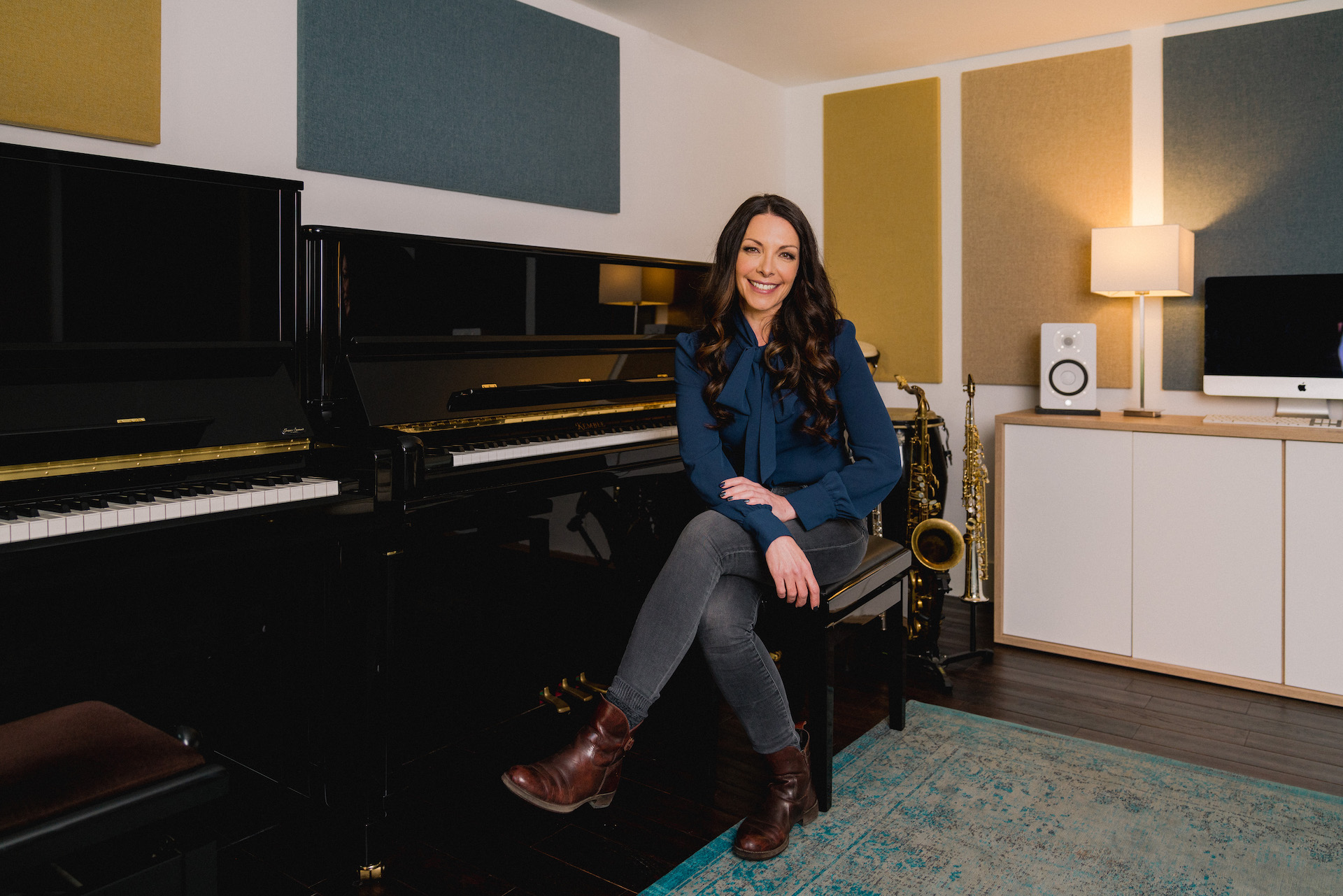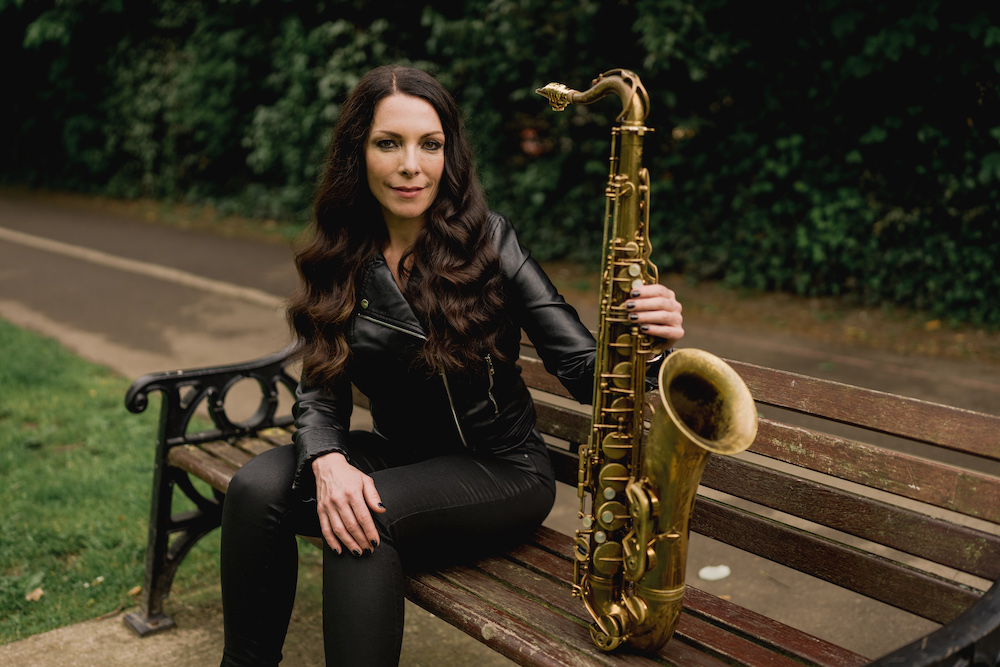[Disclaimer: The following is not mental health advice. If you or a loved one need a diagnosis or treatment for mental illness, seek out a professional.]
Being on the road takes physical and mental fortitude. If you want to keep showing up for gigs and making the most out of the amazing opportunities life affords you, then you have to give back to your body and mind.
But of those two, the mind often gets the short end of the stick. We all pretty much know that you can’t lose a lot of sleep and eat pizza every night — you need rest and a balanced, healthy diet. It’s fairly common knowledge that you should stretch and get some exercise throughout the week. And yet, knowing how to maintain our mental health is much less common.
I think there are four really powerful ways that you can feed your mental health. These are all major parts of my routine, and each of them can be used as much or as little as you find necessary. Of course, everyone is different, and your individual needs can change drastically over time. But if you know how to use these four tools, you’ll be well on your way to greater mental clarity, a better mood, and stronger focus.
So what are the big four?
● Meditation
● Visualisation
● Neuro-Linguistic Programming (NLP)
● Cognitive Behavioural Therapy (CBT)
Each of these plays their own unique role in strengthening mental health and forming a powerful routine that keeps you clear and positive — even through those long nights on the road!
Meditation

Let’s start with the single best thing you can put in your routine: meditation.
This one activity has the power to transform everything in your life. That’s because the simple act of sitting and observing your thoughts gives you an added perspective that nothing else can really match.
When you regularly meditate, you’ll find yourself able to think much more clearly in stressful situations. You’ll be able to pause before reacting to something emotionally, making your relationships and day-to-day activities much more positive.
That improved self-awareness extends to everything in your life. You notice the decisions you make, which means no more mindless Netflix streaming or junk food bingeing. Plus, meditation calms your mind down, letting the present really sink in.
What are the benefits of meditation?
Okay, so what are the exact benefits of meditating regularly? The list is actually quite astounding:
- Reduced stress
- More self-awareness
- Emotional stability
- Better focus
- Improved memory
- Lower blood pressure
- Entirely free and easy to begin!
How do I start meditating?
Meditating is something that comes in many different styles. That means there’s almost certainly a form that works for you. That being said, there are some basics that can get you started. It’s important to meditate at least once a day for a few weeks to really get the hang of it — you can’t enjoy the effects by doing it once in a while.
Here is a simple way to start:
● Find a quiet place where you won’t be disturbed.
● Set a timer. Remember, if you use your phone as a timer, you’ll want to silence your ringer. This is also a good time to light incense if that helps you.
● Sit upright, either on a mat on the floor or in a chair. Whatever you choose, try to maintain good posture.
● Close your eyes and focus on your breath.
● As ideas and thoughts come to you, simply acknowledge them and let them go. Right now is not the time to think. If you get lost in a thought or memory or maybe a favourite song, that’s okay. Once you notice this, simply return your attention to the breath.
● Keep doing this until the timer goes off.
Pretty easy, right?
Well, yes and no. In some ways, meditation is the easiest thing you’ll ever do. You just sit there and don’t think about things.
But we all know that this is easier said than done. What’s important, especially at the beginning, is to not get discouraged if you have problems silencing the mind. The important thing is that you sit there and try to be present, not following your thoughts.
Maybe in some ways, the best meditation sessions are the ones where your mind is going a mile a minute. Because then, you get to really train yourself to release thoughts.
And take heart! If you do this every day (more or less — life happens and you will miss days once in a while) you will improve. You’ll also start reaping the rewards like inner peace, which is motivating to keep up the good work.
How long should I meditate?
If you are just beginning a meditative practice, you should start somewhere a little bit longer than what feels easy. That’s probably around 10 minutes. Every week, increase how much you are meditating by five minutes.
It seems like somewhere between 20 and 30 minutes a day is where you really start to benefit from the practice. Once you get to this point, you can probably stay there. Or, if you feel up to it, try going longer.
Visualisation

I think meditation is the backbone of a good mental health routine, but once you have that established, you can use a lot of its powerful benefits to supercharge other practices. Visualisation is one practice in particular that can synergize wonderfully with meditation.
When you commit to making both a part of your routine, you are also beginning to expand your toolset. Whereas meditation gives you the power to step back, visualisation gives you the power to bring things forward. Now, you are really taking control of your life and mental health!
While no single practice can make you calm, clear-headed, and creative all the time, visualisation is a major step in that direction.
What is visualisation?
Visualisation is like controlled daydreaming. It is a set of practices that get you to imagine chosen experiences.
By using your imagination this way, you can drastically improve your outlook on life and the moment at hand. It can help fight off anxiety and make a goal feel more tangible — meaning you’ll be more likely to achieve it. It can help you practise something you’ve never done before. And it can definitely boost your attention, creativity, and focus.
What should I visualise?
This is a great question! The truth is, it all comes down to what you need right now.
If you are feeling anxious, you might imagine your perfect island getaway. If you know you should workout but can’t get the motivation, you can see yourself working out and then finishing up and feeling great, or you might imagine yourself six months from now after staying committed to your regimen. If you want to accomplish a large goal, you might visualise yourself having succeeded to keep you inspired.
As you can see, there are many, many things you can do to specifically improve your attitude and performance. And as long as you’ve kept up your visualisation practice, you’ll have the skills in place to make these really effective.
So to keep your visualisation muscles strong, you’ll need a go-to that you can do when you don’t have anything specific in mind. A relaxing place is a favourite for this, because we can almost always use a little relaxation in our lives.
How do you practise visualisation?
Just like meditation, there are many ways to accomplish visualisation. Some of them will work better than others, depending on your own unique skills, abilities, and preferences. That being said, there are some basics you can get the hang of first.
Let’s take the example of a tropical island getaway:
- Go through the steps for meditation, and do this for a few minutes.
- Once you are deeply relaxed, begin to imagine sitting on the beach of your island.
- Engage the senses — what do things look like, smell like, feel like? What colour is the sand? What kind of plants are around you? Is it day or night? Answer these questions, but there is no need to judge what you see. Simply notice the details.
- Continue to breathe deeply and simply observe. If you really get into it, feel free to stand up and explore the island in your visualisation.
- When you are ready, take three deep breaths and open your eyes.
You begin by using your meditation skills, then you build a new world piece by piece, taking care to acknowledge all of the senses. The important part is to focus on details. The more details you conjure up, the more vivid the experience will be.
If you are having trouble, you can always follow guided visualisations on YouTube. There are many free options out there, but obviously, there is a wide range of quality. So take a little time to find one that you really like.
Neuro-Linguistic Programming (NLP)

Neuro-linguistic programming (NLP) is the study of how we communicate using a full spectrum analysis. While language is important, most of our communication is non-verbal, so you need to take in many factors to get a deep understanding of what’s going on.
But what does this have to do with our own mental health?
As people developed NLP, they began to form many practical tools to improve the way that you listen to others and communicate for yourself. But there are also many ways you can use these methods to help you feel more positive and productive throughout your day.
Hopefully, with meditation and visualisation as part of your routine, you’ll have a much better starting place in general. And from there, tools from NLP can become those added secret weapons.
For instance, take the concept of anchoring. When you repeatedly feel an emotion while also experiencing a stimulus, you begin to “anchor” that stimulus to the emotion. So if you have a lot of happy memories while wearing a specific blue coat, just seeing that coat will make you feel happy.
Knowing this, you can “anchor” certain items to specific feelings. So let’s say you go to your favourite secluded nature spot several times. And each time when you are feeling really relaxed, you hold a lucky charm in your hand. Eventually, just holding that charm will produce a feeling of seclusion and relaxation.
This is only one example, but it shows how practical NLP can be. It’s worth looking into and finding tools for yourself that can help in your life. (Pro tip: When searching NLP, make sure you type in “neuro-linguistic programming.” Otherwise, you’ll get a ton of results for “natural language processing” — not quite the same thing!)
Cognitive Behavioural Therapy (CBT)

Cognitive behavioural therapy is a results-based form of psychology. Professionals in this field have developed a lot of tools that we can use to overcome our anxiety and get a greater perspective on how we are feeling and why. It also provides techniques to start thinking more positively, improving your mood and overall outlook on life.
So what is CBT? It is a way to control your thoughts, feelings, and behaviours.
This is crucial in times of extreme stress and anxiety or depression. If you are experiencing anxiety, you are likely having rapid thoughts of things that could go wrong (called “catastrophising”). CBT gives you tools to interrupt that thinking with hard hitting questions.
As an example, say you are having anxiety about a long road trip happening the next day. You might start worrying that traffic will be terrible and you’ll end up stuck in it so long that you run out of petrol and you’ll be stranded all night. CBT teaches you ways to be proactive in the moment, and start asking questions like, “What is the likelihood that is going to happen?” These interruptions can stop anxiety dead in its tracks.
There are many highly qualified mental health professionals who use CBT as part of their practice, and there are also many great books and online resources where you can begin learning some of these techniques for yourself. It’s pretty much the most successful modality in therapy, so it’s worth taking a look at.
Bringing It All Together

Above, we’ve gone through what I have found to be four pillars of keeping a strong and healthy mind. Meditation and visualisation create a solid foundation of inner peace that I can rely on. When things get really tough, NLP and CBT give me the tools I need to overcome obstacles.
I hope this brief guide gets you started thinking about your mental health with the same interest as physical health. Your mind will thank you!








